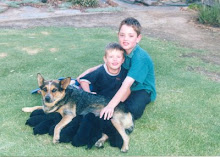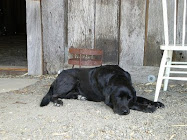
After the very strange weather of the past months, this week has been a delight in the Barossa, Adelaide Hills and many other parts of South Australia. Perfect weather for a bit of exploration of all things magical, before the Karra Yerta Wines 2011 Vintage starts (only a few weeks away, now).
I had a morning trip to Adelaide yesterday, and as is my usual manner, drove to the city via the Adelaide Hills. This truly is the most beautiful way to get to Adelaide from the Barossa, and there are no shortage of photo opportunities on the way. Once my business appointments were finished, I had a spare hour or so until my meeting on the way home to peruse a fabulously charming old building, so utilised the opportunity to have a quick peek and take some photos of the setting of The Garden Of Unearthly Delights (part of the Adelaide Fringe Festival) which is held in February in the parklands on the eastern side of the CBD.


Though there were no acts playing during my visit, it was still a lovely place to walk through and get a feel of just how magical it must be when the stages are full, and the entertainers are in full bloom under the beautiful lighting that is most noticeable, even in the day time. The Garden of Unearthly Delights is in action at Rundle Park from February 10 until March 13, so there's still time for you, and me, to catch some of the national and international acts that are appearing.
Now, if that wasn't enough enchantment for one day, my next stop literally took my breath away. It was in the lovely little hills village of Gumeracha (approximately forty kilometres east of Adelaide, and about twenty kilometres south of the Barossa), which like most of the towns in the Adelaide Hills and Barossa, is steeped in history. Like Tanunda, which now has historical marker posts scattered throughout the village, Gumeracha has its own historical walk.
One of the many places of interest on the Gumeracha historical walk is the incredibly beautiful Randell's Mill, which was built in 1849 under the managment of pioneer William B. Randell (1799 - 1876), who at the time was employed by the South Australian Company. William Randell had a strong interest in milling, and archived letters indicate his strong desire to form a partnership with George Fife Angas (whom Angaston in the Barossa is named after) to establish flour mills in South Australia. The partnership never eventuated, to his dismay, but Randell forged ahead and sited a location near the banks of Kenton Creek, and the incredible building still stands to this day, in what we know as the township of Gumeracha.
With two-foot thick solid bluestone walls, and at its completion, excess of thirty foot ceilings, the mill began its checkered history. Milling ceased in 1874, after the death of William Randell, and the property became a butter and cheese factory for a short time, under a co-operative of local investors but it was not successful and came under private management. On the 19th February, 1912, the mill was partially destroyed by fire, and with severe structural damage, and most of the machinery being lost, it was left in a state of disrepair for a period of time, during which local children used it as a playground.
In 1923 it was sold to the then AMSCOL Company as a depot for milk collection until daily city deliveries made the property redundant. The first two storeys of the building were re-roofed at the second storey (the fire of 1912 had destroyed the third storey) and some form of cold store was put in place, but despite this, the building was left deserted again until 1947 when it was purchased and used as a slaughter house until 1977. Changes in the meat processing industry and the introduction of hygiene standards also made this endeavour redundant.
In 1978, a fellow named Peter Brokenshire came across the mill and commissioned architects to reconstruct and restore the building. This was a massive undertaking as the questionable structure of the building, and the lingering mess and smell of the slaughterhouse did not make things easy. However, Mr. Brokenshire persisted and in 1979 restoration of the mill was successfully completed and the result of that can be seen today. The Brokenshire family used the building as an art gallery and at the end of 1979, Randell's Mill was formally opened by the then Lieutenant Governor Sir Walter Crocker.
So now you know the history of this magnificent and very precious building. What you are not aware of yet, is what it has become today. This is where the magic steps in.

In 2006 the mill was opened as a bed and breakfast. Part of the mill was restored using red gum, recycled timber, wrought iron and cathedral glass to enhance and compliment the old stone walls. This has resulted in an incredibly beautiful historic, yet modern, stunningly decorated self-contained bed and breakfast. Only a section of the original mill is used for the bed and breakfast, while the remainder continues to be the private residence of the owners.

Bronnie and David Nash purchased the mill in late 2008 and with their love of local history and their surroundings, have tastefully continued restorations of the mill, and I have to say, on arriving at the mill to have a look at not only the mill but the bed and breakfast facility (so that I can recommend it to my visitors to the Collective Barossa cellar door outlet), I was almost speechless from the 'wow factor'. I have seen and stayed in a lot of accommodation, and in my previous years, cleaned a lot of them, also (one of my favourite places to work as a cleaner of such was at the magnificent Collingrove Homestead in Angaston).
I felt like I had fallen down the rabbit-hole, like Alice, and ended up somewhere in countryside France or Tuscany, and that was before I had ventured inside the actual accommodation facility. The building, the garden, the courtyard; the incredibly special feeling of being in this totally peaceful and visually enticing environment, is hard to put into words. Scattered throughout the gardens (the guest one and the owner's) are magical objects that create such an ambience that it is hard to do anything but walk around in awe. It gives you the feeling of never wanting to leave, and some of the comments in Bronnie's guest book are testament to that. It really is such a special place, and once you know the history of the actual mill, it only makes it moreso. This building could so easily have been demolished after the fire of 1912. Thank goodness it wasn't.
The inside of the B & B accommodation is simply amazing. Upstairs there is a loft bedroom, so tastefully decorated that it beckons you to lay on the comfortable bed and not wake up for a day or so. Downstairs is a tidy, spacious living area with all the modern amenities, including a stunning kitchen with all provisions provided (this includes fresh eggs from the chickens on the property - see the photo below of Bronnie with the resident pet pig, Mr. Windsor, the chickens and one of her friendly dogs) and a gorgeous bathroom, including a spa.
Bronnie's decorating skills leave nothing to be desired and she is known for her extra special touches to make guests feel very spoilt. Many of the Randell's Mill customers make return trips and it's so easy to see why. I can write another hundred words, or take another fifty photos but in the end, much like a perfect sunset on a Kangaroo Island beach, there is nothing - no way at all - that I can bring to you, what it is that I felt or saw, as I visited the mill yesterday afternoon. You simply have to experience it yourself. You too, will start looking for the White Rabbit, as soon as you pull into the driveway.
For more information on Randell's Mill go to their website for email and phone contact details: http://www.randellsmill.com.au/ or check out their Facebook page or Twitter account and become a fan/follower. It is an indulgent self-contained, more than reasonably priced accommodation option which caters for couples - perfect for wedding nights and of course, short breaks. One night stays are possible, but a small surcharge applies. Two night stays are recommended to really soak in the relaxing atmosphere. Give Bronnie a call or email to check out prices and promotions.






















































